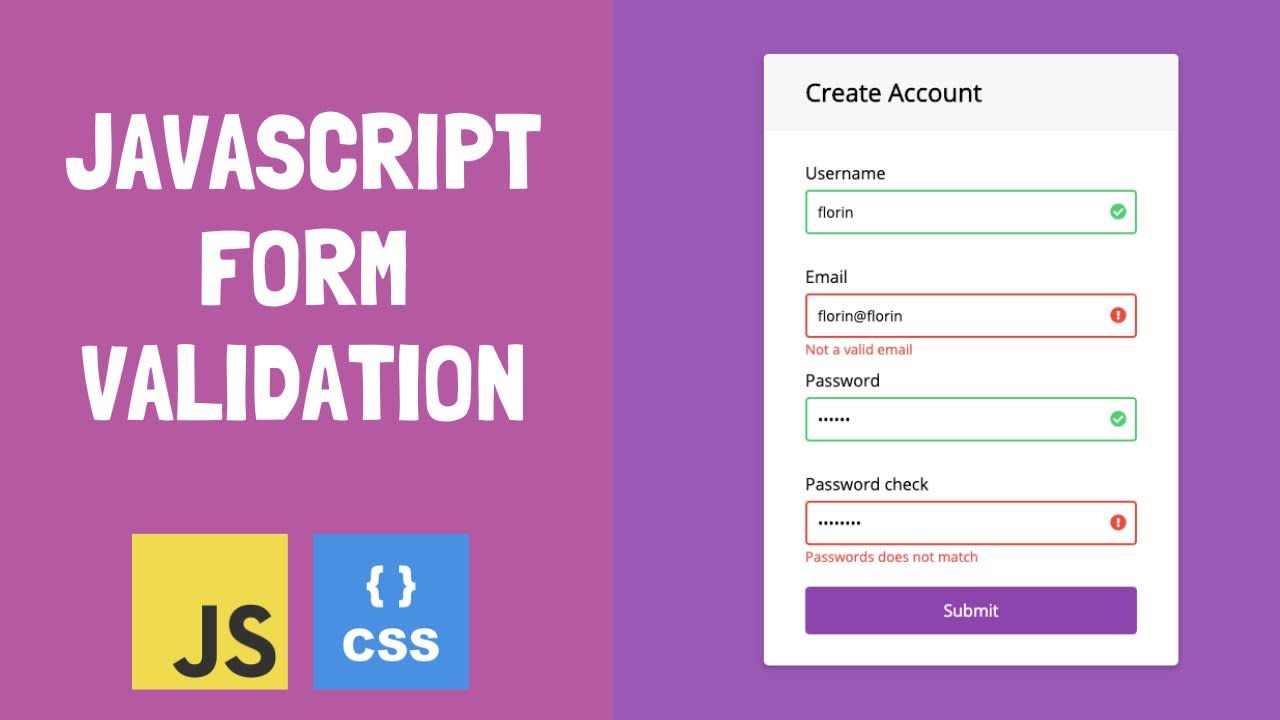Javascript Object Oriented simple form validation

Today I want to show you how to build a simple form validation with Object Oriented programming in Javascript.
Why Object Oriented
Object Oriented programming aim to provide a model of programming based on Objects where an Object has both behaviors state (data) and behavior (code).
Therefore focus on Objects rather than actions and data rather than logic with that our advantages are a more clear modular structure, easier to maintain and modify since we can create more objects with small differences from the exiting ones.
The core concepts
- Objects
- Classes
- Data Abstraction and Encapsulation
- Inheritance
- Polymorphism
OO form validation
Here's our simple form validation in javascript based on Object Oriented programming.
Our scenario: validate fields when form is submitted.
First things first... Let's create our class called Validator and also create our constructor called as method constructor which is responsible to setup our basic data.
;(function(window, undefined) {
var Validator = {
constructor: function(form, config) {
this._elForm = form;
this._els = config.fields || {};
}
}
})(window, undefined);
Now let's create our initializer called init and initialize the program adding a listener to the form using the info/data was passed to our constructor.
;(function(window, undefined) {
var Validator = {
constructor: function(form, config) {
this._elForm = form;
this._els = config.fields || {};
this.init();
},
init: function() {
this.addFormListener();
},
addFormListener: function() {
var formSelector = this._elForm
, elForm = document.querySelector(formSelector);
elForm.addEventListener('submit', this.validate.bind(this), false);
}
}
})(window, undefined);
The method called addFormListener does what it's named.. we add a listener to the form to when submitted trigger a method and also chain a method called bind which call the method this.validate with the context of the class instead of send the object clicked form.
The example below we are going add the method to validate which is responsible to test against the field requirement required, empty or maxlength and then add a CSS class to the input field.
;(function(window, undefined) {
var Validator = {
constructor: function(form, config) {
this._elForm = form;
this._els = config.fields || {};
this.init();
},
init: function() {
this.addFormListener();
},
addFormListener: function() {
var formSelector = this._elForm
, elForm = document.querySelector(formSelector);
elForm.addEventListener('submit', this.validate.bind(this), false);
},
validate: function(e) {
var elFields = this._els;
for ( var field in elFields ) {
var el = document.querySelector(field)
, elVal = el.value;
if ( elFields[field].require || elVal === '' || elVal.length > elFields[field].maxlength ) {
el.classList.add('invalid');
}
}
e.preventDefault();
}
}
})(window, undefined);
We simply create a new object which are going to inherit directly from our class/object and call the constructor passing the form ID and an Object containing an Object called fields which contain all fields that need to be validate with our requirements required and maxlength.
var form1 = Object.create(Validator);
form1.constructor('#form1', {
fields: {
'#fname': {
required: true,
maxlength: 20
},
'#lname': {
maxlength: 10
}
}
});
As a reference the HTML markup looks like this.
<form id="form1">
<fieldset>
<legend>Person</legend>
<p>
<label for="fname">First name:</label>
<input type="text" name="fname" id="fname" />
</p>
<p>
<label for="lname">Last name:</label>
<input type="text" name="fname" id="lname" />
</p>
<input type="submit" name="submit" class="submit" value="Submit" />
</fieldset>
</form>
Note that we can use a different design pattern to just the constructor method be accessible, but let's keep it simple.
Also note that in ES6 this OO Approach are going to very clear on how to use the API.
Cheers!

